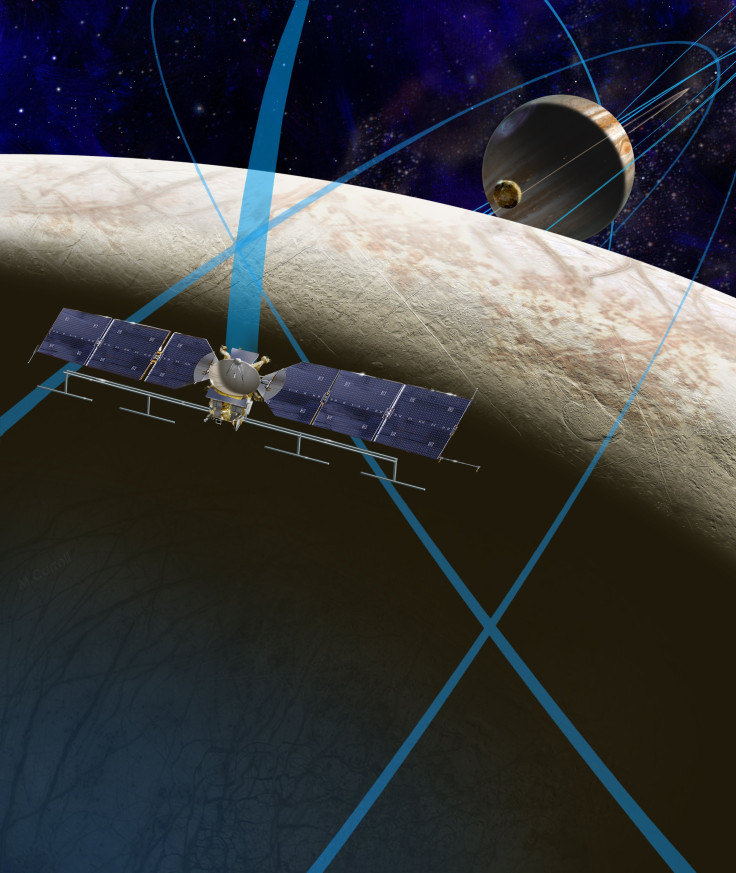Life On Europa? NASA's Flyby Mission Completes Major Review, To Move Into Preliminary Design Phase

NASA’s ambitious mission to fly by Jupiter’s moon Europa — perhaps the most promising place to look for life beyond Earth in our solar system — has taken another step closer to reality. The space agency announced Wednesday that the mission had completed a major review, and would, on Monday, enter a preliminary design phase known as “Phase B.”
“A highlight of Phase A was the selection and accommodation of 10 instruments being developed to study the scientific mysteries of Europa,” NASA said in a statement. “The new mission phase is planned to continue through September 2018, and will result in the completion of a preliminary design for the mission's systems and subsystems.”
Previous observations have indicated that the Jovian moon has a salty, subsurface ocean, and, as our experience on Earth has shown, where there is water, there is life. If such an ocean is proven to exist, it could have more than twice as much water as Earth currently does.
The flyby mission plan calls for a spacecraft to be launched to Jupiter in the 2020s, and it would arrive in its orbit after a journey of several years. Once it gets there, it would orbit Jupiter as frequently as every two weeks, conducting a total of up to 45 flybys of Europa during its primary mission.
During each flyby, instruments on board the spacecraft would snap high-resolution photographs of the moon’s icy surface and investigate its composition and the structure of its interior and icy shell.
“Some testing of spacecraft components, including solar cells and science instrument detectors, has already been underway during Phase A, and this work is planned to continue into Phase B,” the space agency said in the statement. “In addition, during Phase B subsystem vendors will be selected, as well as prototype hardware elements for the science instruments. Spacecraft subassemblies will be built and tested as well.”
Once the mission proves its readiness in Phase B, it would move on to Phase C and D, during which the design would be finalized, and the spacecraft would be manufactured, assembled and tested.
In addition to the flyby mission, NASA has also revealed plans to send a lander to Europa. In a 264-page report released earlier this month, the space agency listed out three key science goals for the lander mission — searching for life on the moon, assessing its habitability by analyzing material from the surface, and characterizing Europa’s surface and subsurface to support future robotic missions.
Although the dates for the lander mission are far from being finalized, an optimistic estimate pegs the launch date at sometime in 2024, followed by a landing on Europa in April 2031.
© Copyright IBTimes 2024. All rights reserved.






















